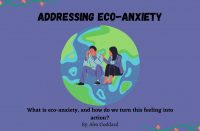AS I WRITE these words, a battle quietly escalates. Two weeks ago in New Brunswick, on the heels of a tone-deaf throne speech in Ottawa, RCMP officers invaded an illegal1 blockade by the Elsipogtog First Nation in protest of shale gas exploration on their land. The pepper spray, rubber bullets, barking dogs, Molotov cocktails, charred cars and handcuffs were but a skirmish in a global clash of survival strategies. It’s a struggle that erupts in increments, and whose outcome is both crystal clear and unforeseen.
AS I WRITE these words, a battle quietly escalates. Two weeks ago in New Brunswick, on the heels of a tone-deaf throne speech in Ottawa, RCMP officers invaded an illegal1 blockade by the Elsipogtog First Nation in protest of shale gas exploration on their land. The pepper spray, rubber bullets, barking dogs, Molotov cocktails, charred cars and handcuffs were but a skirmish in a global clash of survival strategies. It’s a struggle that erupts in increments, and whose outcome is both crystal clear and unforeseen. The trickiest fact is that Elsipogtog’s defenders are the infantry in the trenches for everyone – even for the government and oil industry executives who doubt climate change yet have complete faith in fracking.
The hostility of Elsipogtog is hardly an isolated incident. Worse, it’s trumped by invisible disasters like the cold war being waged every day against the people of Aamjiwnaang (south of Sarnia, Ontario) by their Chemical Valley neighbours, where the lion’s share of Canada’s petrochemical industry occupies a 25 square-kilometre territory. Beyond First Nations becoming dispossessed, what conjoins these two very different conflicts is that they lack the momentum of public interest.
Certainly both communities have cried for help and demanded justice. Perhaps their protests will, in time, be resolved. But what those communities need now are not more embattled soldiers or physical standoffs for the media to misrepresent. They need more quiet heroes to take up the fight – more regular folks sharing their outrage with elected officials, pushing for better strategies to extract energy, crafting unconventional solutions to our quagmires.
There is only one way to prove that pens are mightier than swords. The challenge, whether fighting or writing, has always been to get a large enough army behind the campaign.
In this issue’s feature story, Chris Turner, Canada’s own intrepid surveyor of sustainability’s front lines, recounts meeting a man he calls “the 21st century’s most important politician.” The success of German legislator Hermann Scheer’s feed-in tariff model is clear evidence that renewables can build rather than burn down our economies. His pioneering policy is the sort of brilliant, obscured masterstroke that Turner says will lead us through the climate change meltdown. “The Anthropocene hero’s task is a slow, often thankless grind,” writes Turner. “The path is murky, indistinct. Accolades – if they arrive at all – resemble no one’s idea of a ticker tape parade, and they come with a sort of arbitrary timing, before the work has begun or long after it’s done.”
A\J’s heroes issue highlights some of the Great Canadian Game Changers among us. On our cover is Dawn Deydey, a community building force who has elevated Fernie, BC, by simply recognizing opportunity, turning her plans into paperwork and donating her time. We get an earful from Tom Rand, a sharp-tongued clean-tech investor who puts his green where his mouth is. We profile the T’Sou-ke Nation on Vancouver Island, where solar power is rekindling traditions and locals are thriving on the influx of natural capital. We gauge the fossil fuel divestment campaign that Canadian university students are driving. And we recognize a small pile of stand-up scientists, organizers and thinkers like Jessica Ernst, the long-time oil patch consultant whose legal challenge to the Alberta fracking industry is just gathering steam.
The people and communities in these pages are heroes not just because of their actions, but because they’ve found the right words and circumstances to enlist momentum for their causes. They recognize wrong from right and find a way to grease the hinge between them. To borrow a few more words from Chris Turner: “They are brave in the ordinary way of tenacity and strong conviction.”
We all have this capability, should we choose to use it. But first we must unsheathe our pens and ink out the villains.
Conserve after reading,
Eric
editor[at]alternativesjournal.ca
1] As happens sometimes in publishing, I’m sorry that I used this particular word, but I didn’t arrive at that conclusion until after this issue of A\J went to press. I was attempting to accentuate the high stakes in the Elsipogtog conflict, but I did so irresponsibly and in a rush, and I should have taken more time to make sure I had my facts straight. This recent article in The Toronto Star provides some essential background on the subject, including this key correction of my mistake: “The Mi’kmaq never gave up legal rights to their land or resources. Canada does not own the land that the people of Elsipogtog are defending.”
How to Submit an Environmental Petition
The Commissioner of the Environment and Sustainable Development is responsible for the administration of the environmental petitions process within the Office of the Auditor General. Environmental petitions allow any resident or organization within Canada to submit a petition to the ministers of 26 federal departments or agencies, and to obtain a formal written response to their questions or concerns relating to the federal government’s management of the environment.
Once a petition is submitted, the minister of a petitioned department must personally respond to the petitioner within 120 days. With the petitioner’s consent, the petition and the government’s responses will be published to the Auditor General’s public website, which allows more Canadians to become informed about the issues raised. The Office considers environmental petitions (among other factors) when making decisions about what subjects will be audited.
Watch the video below for a brief explanation of the petitions process, or dig deeper and get petitioning with this guide (PDF version).
The following are examples of past environmental petitions, the diversity of issues they raised and some of the Commissioner of the Environment and Sustainable Development’s audits, which reported more on these topics. (Follow hyperlinks to petitions | audits.)
Ex. 1: Shale gas extraction in Quebec & toxicity of chemicals | Update on government responses to petitions on hydraulic fracturing
Ex. 2: Nuclear liability limits | Financial assurances for environmental risks (paragraphs 2.39 to 2.50)
Ex. 3: Impact of oil sands development in Alberta | Assessing cumulative effects of oil sands projects
Ex. 4: Toxic substances, petitions #340 & #325 | Risks of toxic substances
Ex. 5: Contaminated sites | Federal contaminated sites and their impacts
Ex. 6: Oil tankers operating in BC, petitions #344 & #336 | Financial assurances for environmental risks (paragraphs 2.56 to 2.66) | Oils spills for ships

Eric is the founder and executive director of Night\Shift, downtown Kitchener’s nocturnal adventure festival, and he helped craft the rebranding of A\J as its editor-in-chief (2012-2014). He has a dusty Bachelor of History from uWaterloo and has worked as a journalist in Canada since 2000, holding editing positions with up! Magazine (WestJet Airlines’ in-flight publication), Adbusters, Reade













